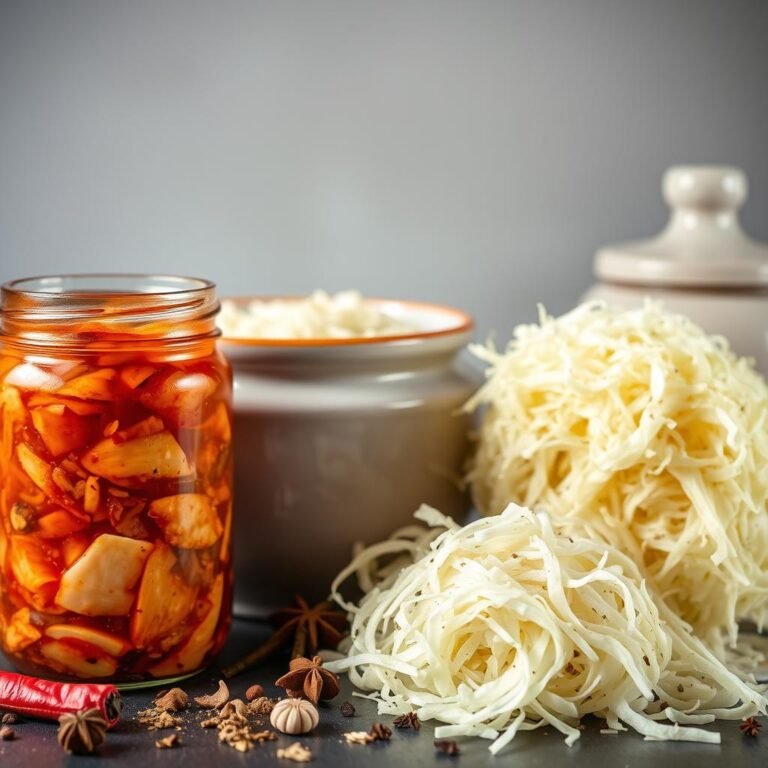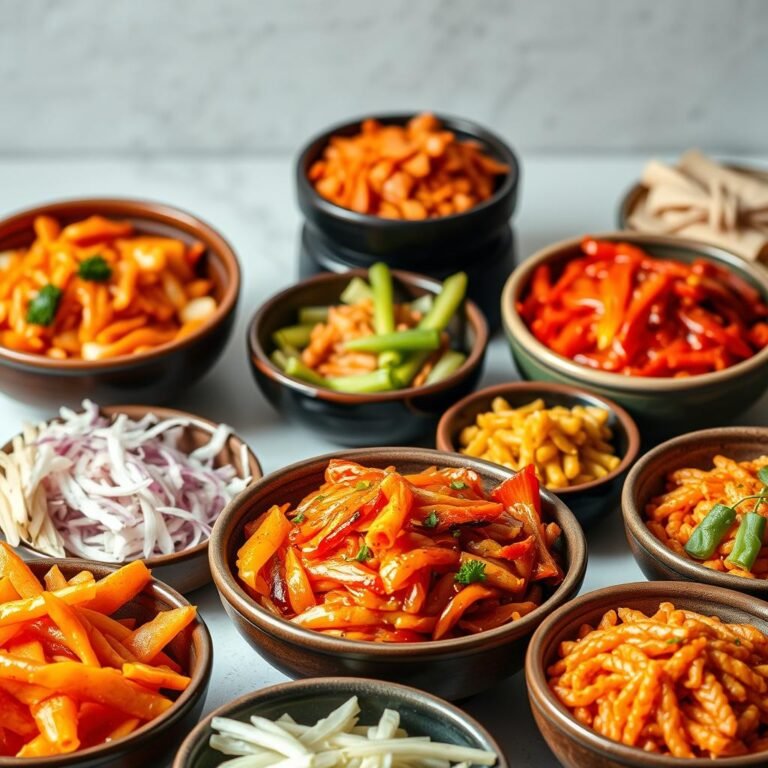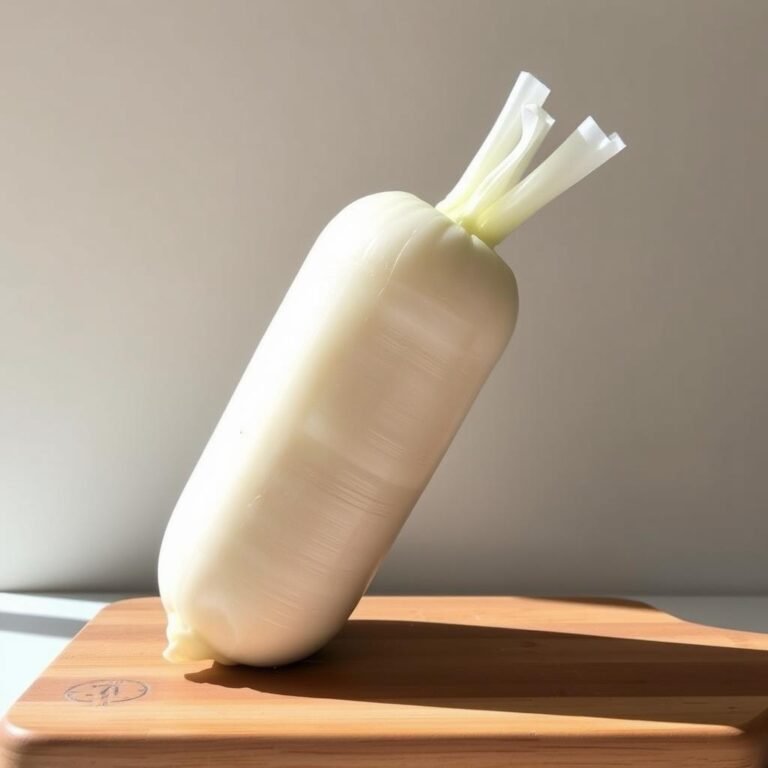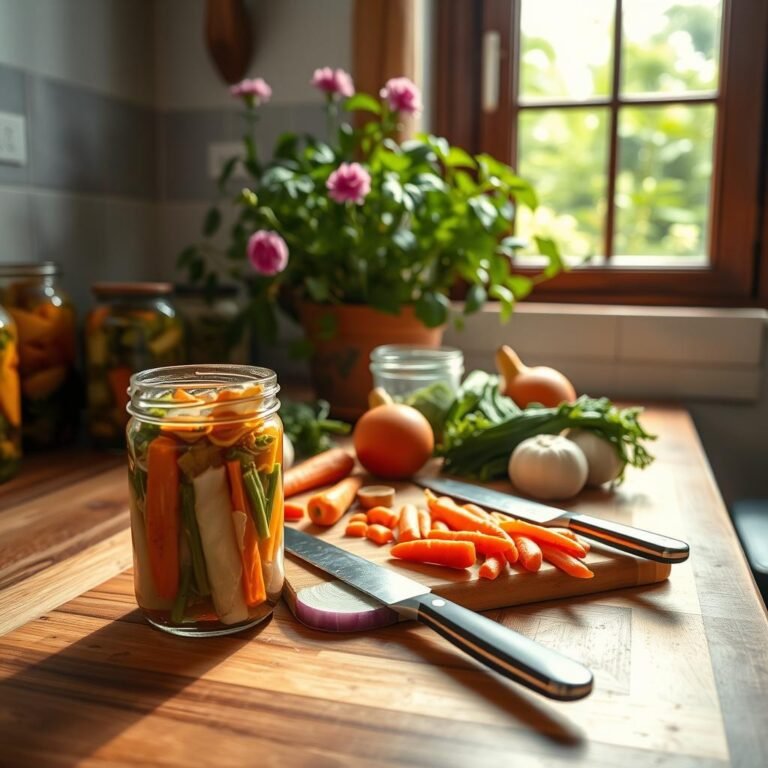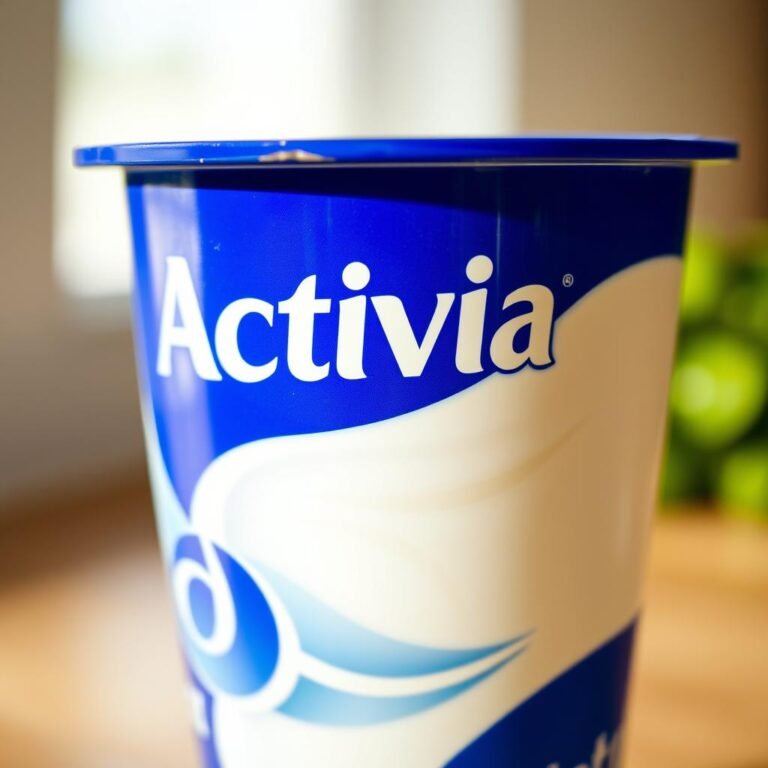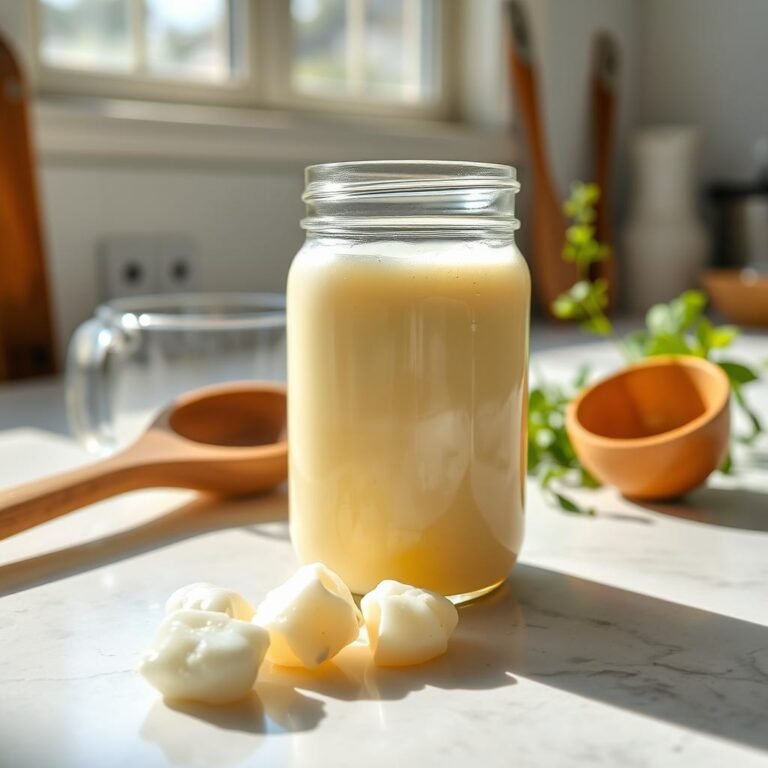Hot and Healthy: Fermented Pepper Hot Sauce Recipe
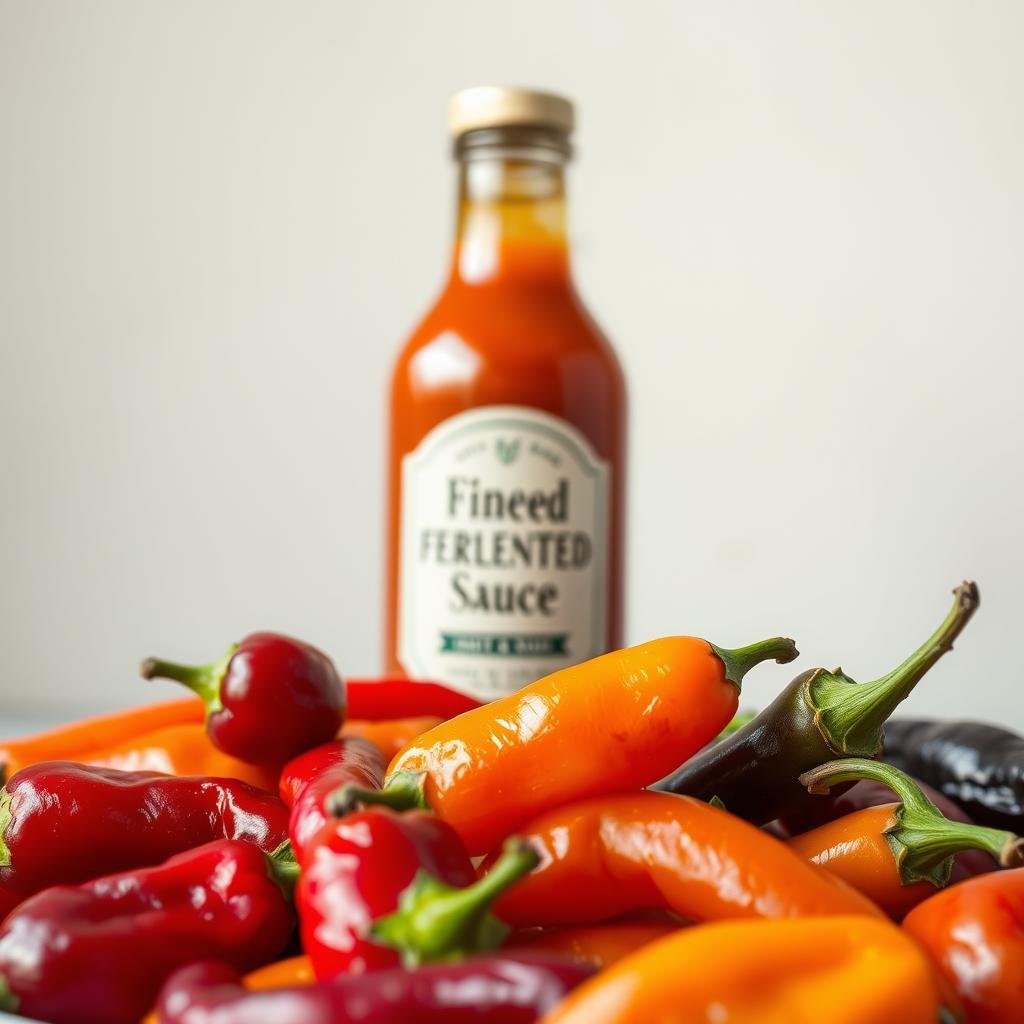
Start a tasty journey with our fermented pepper hot sauce recipe. Use fresh, home-grown red serrano peppers for a spicy kick. This homemade sauce is full of flavor and good for you, thanks to its probiotics.
Fermentation makes your hot sauce taste better and healthier. For a step-by-step guide on making fermented hot sauce, click here. With a few easy steps, you can make any meal special.
The Benefits of Fermented Hot Sauce
Fermented hot sauces, like this recipe, have many benefits. They are easier to digest and taste better. The fermentation process makes peppers more nutritious by adding vitamins.
One big health plus is the probiotics in fermented hot sauce. These good bacteria help your gut health a lot.
When peppers ferment, bacteria turn sugars into lactic acid. This makes the sauce tangy and full of probiotics. These probiotics are good for your gut and overall health.
Also, fermentation makes nutrients easier for your body to use. The vitamins and enzymes in probiotic pepper sauce help with digestion and nutrient use. Adding fermented hot sauce to your meals is tasty and good for you.
Essential Equipment for Making Fermented Hot Sauce
Starting to make fermented hot sauce at home needs some key tools. These tools help make sure the process is safe and works well. The right equipment helps get the flavor and texture right while keeping things clean.
Fermentation Vessel
A good fermentation vessel is key. Mason jars are often used because they are easy to find and work well. Make sure the jar is clean and doesn’t have cracks to avoid problems.
Fermentation crocks are also great. They give more room for bigger batches.
Gloves & Kitchen Scale
Wearing gloves when handling hot peppers is important to avoid skin problems. Nitrile gloves are a good pick because they last long and protect against chemicals. A kitchen scale is also key for measuring ingredients right. This ensures the right mix of peppers, salt, and other ingredients for good fermentation.
Blender & Sieve
After fermentation, a good blender makes the sauce smooth. It breaks down the peppers well. Then, a sieve helps get rid of seeds and pulp, making the sauce silky.
Woozy Bottles
Storing hot sauce in woozy bottles looks professional and is handy. These bottles are made for sauces and have a narrow neck for easy pouring. Always sterilize them before use to keep the sauce fresh.
Here’s a look at some of the homemade hot sauce equipment you might need:
| Equipment | Usage | Recommended Brands |
|---|---|---|
| Fermentation Vessel | Hold and ferment ingredients | Ball, Kilner |
| Gloves | Protect hands from hot peppers | Microflex, SAS Safety |
| Kitchen Scale | Weigh ingredients accurately | Ozeri, Etekcity |
| Blender | Blend fermented peppers | Ninja, Vitamix |
| Sieve | Strain the sauce | Cuisinart, OXO |
| Woozy Bottles | Store finished hot sauce | SKS, Berlin Packaging |
Selecting the Right Peppers
Choosing the perfect peppers is key for a great spicy fermented pepper sauce. The right peppers affect the sauce’s heat, texture, and taste. Here are some tips to help you pick the best peppers for your hot sauce.
Spice Level Considerations
The heat of your sauce depends on the peppers’ Scoville heat units (SHU). For very hot sauces, try habaneros, ghost peppers, or Carolina Reapers. For milder sauces, jalapeños or poblanos are better. Pick peppers that match your spice level for the best taste.
Thick or Thin-Skinned Peppers
Pepper skin thickness affects your sauce’s texture. Thick-skinned peppers, like bell peppers, need longer to soften. Thin-skinned peppers, like Thai chilies, ferment faster and blend better. Knowing this helps you get the right sauce texture.
Fresh versus Dried Peppers
Fresh and dried peppers each add something special to your sauce. Fresh peppers give a bright, fresh taste. Dried peppers, like chipotles or Ancho chilies, add smoky and sweet notes. Choose based on the flavor you want in your homemade hot sauce.
The Fermentation Process Explained
Fermenting hot sauce is cool. Lactic Acid Bacteria (LAB) turn carbs into lactic acid. This makes the sauce taste better and is good for you. LAB need a special place to grow, without air.
What is Fermentation?
Fermentation is when tiny creatures like bacteria and yeast change stuff. They turn carbs into acids, gases, or alcohol. For hot sauce, we focus on lactic acid. This makes the peppers last longer and the sauce taste richer.
Creating an Anaerobic Environment
To ferment hot sauce, we need no air. Air can ruin the sauce with bad stuff. We use brine and seal it in jars or crocks. A water airlock helps gases out, keeping air away.
Brine Preparation
Brine is key for fermenting peppers. It’s water and salt, without chlorine or iodine. The salt level is about 2-4%. This mix is perfect for LAB, stopping other bad microbes.
How long it takes to ferment depends on many things. Some sauces are ready in a week, others take months. For more info, check out this guide.
Step-by-Step Guide: Fermenting Your Peppers
Starting your best fermented hot sauce recipe is all about careful steps. This guide will help you through each stage for the best results.
Chopping and Preparing the Peppers
First, pick fresh, top-quality peppers. Wash them well under water. Then, cut off the stems and slice them into equal pieces. This makes sure they ferment evenly.
Submerging Peppers in Brine
Make a brine by mixing non-iodized salt in water. Put the pepper pieces fully in the brine in your vessel. Make sure none are above the brine. Use a weight if needed.
Monitoring the Fermentation
Put your vessel in a cool, dark spot. Check it every day. Look for bubbles and make sure the peppers stay under the brine. This careful watching is important for a great hot sauce.
Signs of Completed Fermentation
When fermentation is done, the brine will be cloudy and smell sour. Try a small taste. If it’s tangy and acidic, it’s ready. Then, your peppers are ready for the next step in making hot sauce.
Blending and Bottling Your Hot Sauce

After waiting for your peppers to ferment, it’s time to blend and bottle your hot sauce. This step is key to getting the right texture and taste. It also helps keep your hot sauce fresh for longer.
Blending Techniques
Blending your hot sauce right is important. Start by moving the fermented peppers and brine to a food processor or blender. Blend until it’s the consistency you like.
If you want it smoother, strain it through a sieve. This removes solids and makes the sauce look better.
Bottling Tips
When bottling your hot sauce, do it well to keep it good for a long time. Use woozy bottles because they’re the right size and easy to handle. Make sure the bottles are clean to avoid germs.
Use a small funnel to fill each bottle, leaving a bit of room at the top. This lets the sauce expand naturally. Then, seal the bottles tightly and keep them in a cool, dark spot.
Recipe Variations and Additions
Making your own organic fermented hot sauce is fun because you can try many flavors. You can mix different ingredients to find your favorite hot sauce. From sweet fruits to spicy peppers, you can make many kinds of hot sauce.
Fruity & Spicy Hot Sauce
Add sweetness to your hot sauce with fruits like pineapple, mango, or peaches. This makes a tasty mix of sweet and spicy. You can follow the same steps as here to make it. Just blend the fruit with the peppers for a special flavor.
Mexican-Style Hot Sauce
Try adding Mexican spices and peppers for a smoky taste. Use jalapeños, serranos, and spices like cumin and coriander. This hot sauce is great with tacos and burritos. Follow the basic steps for making organic fermented hot sauce, but let the spices and peppers ferment together for a deep flavor.
Louisiana-Style Hot Sauce
Louisiana-style hot sauce is tangy and simple. It uses cayenne peppers and a few other things. The fermentation process is the same, but adding vinegar after helps with the tang. Some recipes ferment for months to get a stronger flavor.
| Hot Sauce Style | Key Ingredients | Flavor Profile |
|---|---|---|
| Fruity & Spicy | Peppers, pineapple/mango/peach, garlic | Sweet, spicy |
| Mexican-Style | Jalapeños, serranos, cumin, coriander | Smoky, spicy |
| Louisiana-Style | Cayenne peppers, vinegar | Tangy, spicy |
The Magic of Probiotics in Fermented Hot Sauce
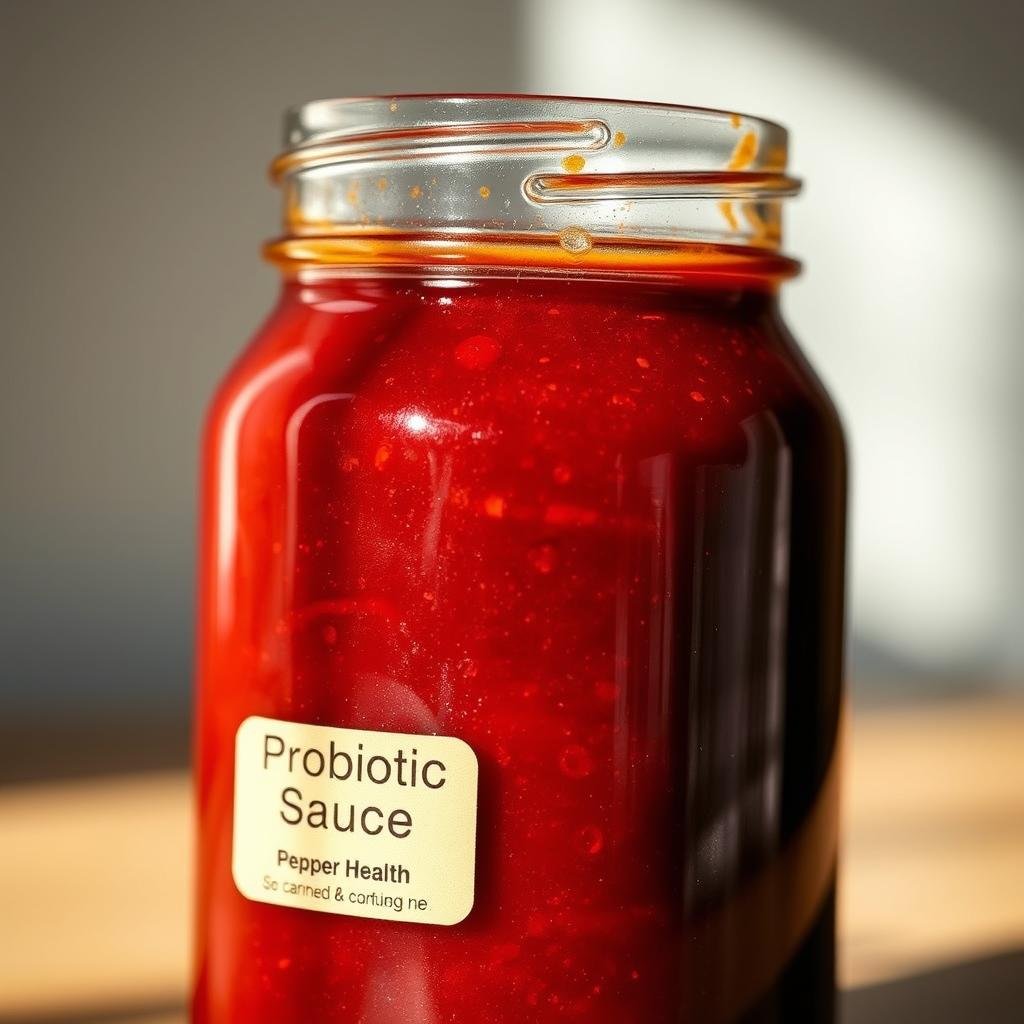
Fermentation is truly magical, thanks to its amazing effects on probiotic-rich foods like hot sauce. The probiotic benefits of hot sauce made through fermentation are incredible. Beneficial microbes break down sugars and carbs, making lactic and acetic acids. This not only makes the flavor better but also boosts gut health and balances the microbiome.
One big benefit of hot sauce is better digestion. A healthy gut helps break down food better, leading to better nutrient use. Also, a healthy gut boosts immunity, lowering the chance of getting sick.
Fermentation makes nutrients like vitamins and minerals easier for our bodies to use. For more info on these benefits, check out this informative article about fermented sauces.
Eating probiotic-rich foods also helps mental health. A healthy gut is linked to a healthy mind, known as the “gut-brain axis.” Adding probiotic pepper sauce to your meals might help your mental health too.
Using Your Fermented Pepper Hot Sauce in Recipes
Adding fermented hot pepper sauce to your dishes makes them taste better. It also adds good bacteria to your meals. Here are some fun ways to use it in your cooking.
Marinades and Dressings
Give your marinades and dressings a spicy twist. Mix fermented hot sauce with olive oil, lime juice, and garlic for a zesty marinade. Or blend it with yogurt, herbs, and spices for a creamy, spicy dressing.
The sauce’s acidity tenderizes meat. The probiotics make your meal healthier.
Sauces and Soups
Make your tomato sauce or soup more interesting with hot sauce. Add a spoonful to your favorite sauces or soups for a flavor boost. It’s great in creamy bisques or vibrant gazpacho, making simple recipes special.
Everyday Drizzle
Use your fermented hot pepper sauce on more than just food. It’s great on breakfast eggs, lunch sandwiches, or roasted veggies. For more ideas and tips, check out this guide on fermented hot sauce.
Storing and Shelf Life of Fermented Hot Sauce
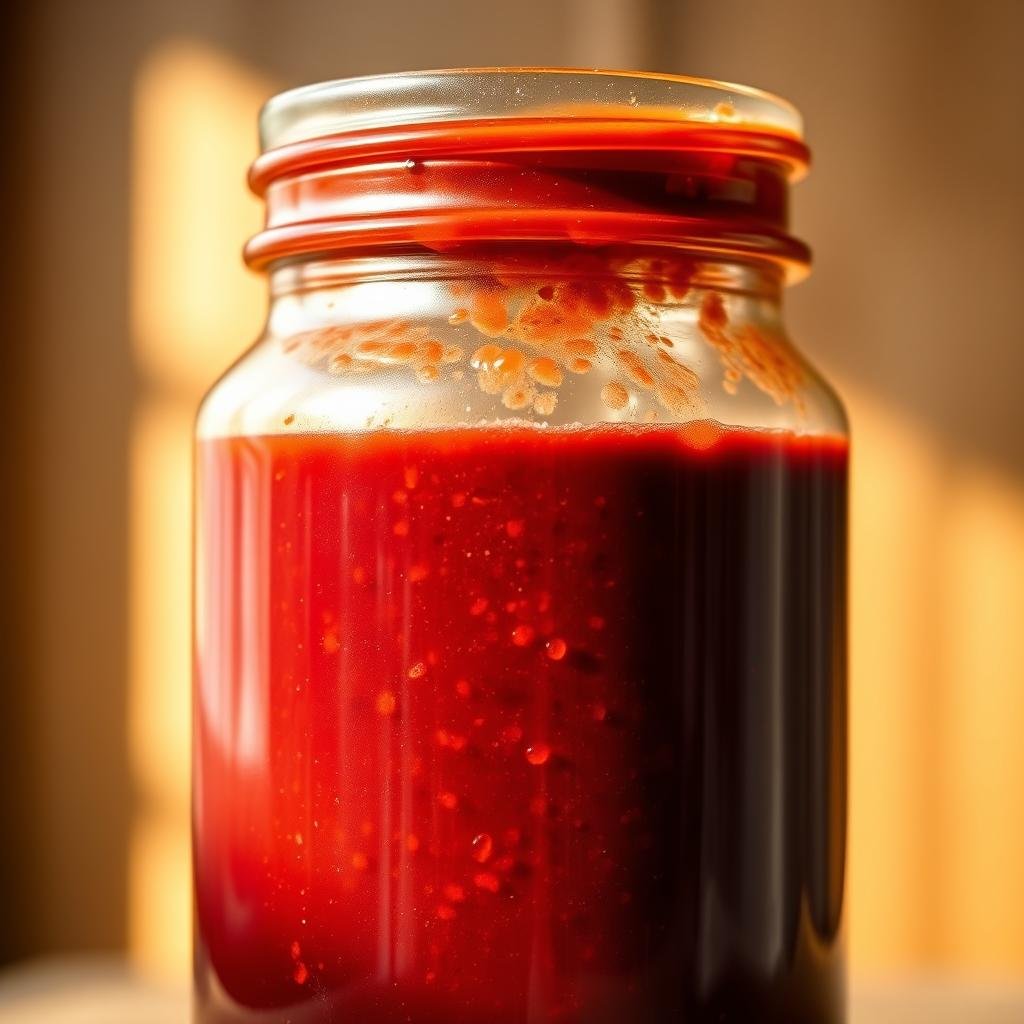
Knowing how to store your fermented hot sauce is key to keeping it fresh. The shelf life depends on ingredients and storage. Here’s how to keep your hot sauce good for a long time.
Refrigeration
Storing it in the fridge is a great way to keep it fresh. Opened bottles can last up to three years in the fridge. The cold slows down fermentation and prevents mold.
Make sure to use a clean bottle cap. This stops bacteria from getting in.
Shelf Stability and pH Levels
The right pH level is important for shelf life. A pH of 3.4 or lower stops bad bacteria. Unopened bottles can last even longer in a cool, dark spot.
Adding different ingredients can change shelf life. So, watch these changes closely.
For more on keeping your hot sauce fresh, check out this guide on storing hot sauce.
Don’t use oil to avoid botulinum toxin. Use good bottles and caps to keep it fresh longer.
| Storage Method | Shelf Life | Notes |
|---|---|---|
| Refrigerated (Opened Bottles) | Up to 3 years | Maintain a clean bottle cap |
| Unrefrigerated (Unopened Bottles) | Several years | Store in a cool, dark place |
| pH Level (3.4 or Lower) | N/A | Ensures acidity prevents bacterial growth |
Common Issues and Troubleshooting
Fermenting hot sauce is fun, but it can have its challenges. We’ll talk about Kahm yeast, mold, and how to fix flavor and texture problems.
Understanding Kahm Yeast
Kahm yeast is a common problem for home fermenters. It looks scary, but it’s usually safe. This yeast forms a white, filmy layer on your hot sauce.
It means your fermenting area isn’t quite right. Make sure your peppers are fully covered in brine. Also, seal your container well to keep air out.
Dealing with Mold
Mold is different from Kahm yeast. It’s serious and can ruin your sauce. Mold looks like fuzzy patches in white, green, or black.
Get rid of mold right away. Scoop out the moldy parts and a bit of the sauce around it. This helps get rid of spores. Keep your area clean and peppers covered to stop mold.
Adjusting Flavor and Consistency
After fermentation, your hot sauce might need some changes. Here are tips to fix it:
| Issue | Solution |
|---|---|
| Too Salty | Add more peppers or other ingredients to dilute the salt concentration. |
| Too Sour | Blend in some fresh vegetables or a small amount of sugar to balance the acidity. |
| Too Thin | Boil the sauce briefly to reduce excess liquid, or add a thickening agent like xanthan gum. |
| Too Thick | Add some additional brine or vinegar to reach the desired consistency. |
Getting the flavors and texture right will make your homemade hot sauce perfect.
FAQ: Your Fermented Hot Sauce Questions Answered
Starting with fermented hot sauce can raise many questions. We’ve got answers to help you make great homemade hot sauce. Check out this FAQ and tips for better fermentation and flavor.
What’s the best way to control the spice level? Choose the right peppers for your spice level. For less heat, use Anaheim or Poblano peppers. For more heat, try Habaneros or Ghost peppers.
Adjust the spice by adding more or fewer seeds and membranes. These parts have lots of capsaicin.
How do I know when the fermentation is complete? Look for bubbles, a tangy smell, and a sour taste. No bad smells are good signs. It usually takes one to four weeks, depending on the temperature.
Check your jar every day for these signs. This will tell you when it’s done.
What are the storage guidelines for fermented hot sauce? Storing it right keeps your sauce fresh. Move it to a clean, airtight container after fermentation. Keep it in the fridge to slow down fermentation.
If you want to store it at room temperature, make sure the pH is below 4.5. This helps it stay good longer.
